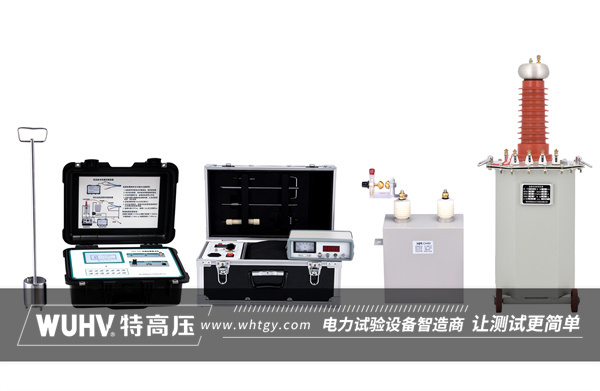The cable fault testerunder Wuhan UHV can help many power workers conduct various power tests more conveniently.

Determining the specific location of a buried cable fault is a complex and meticulous process that requires the comprehensive use of multiple methods and tools. The following is a clear judgment process, summarized based on relevant numbers and information:
1、 Preliminary diagnosis of malfunction
Collect information:
Understand the basic information of cables, including cable model, specifications, laying method, service life, etc.
Inquire about the specific situation at the time of the malfunction, such as whether there were any abnormal sounds, whether there was a fire, etc.
Appearance inspection:
Conduct a visual inspection of the cable circuit to see if there are any obvious signs of damage, burning, or deformation.
Check key parts such as cable joints and terminals for oil leakage, corrosion, or poor contact.
2、 Determination of fault type
Using testing instruments:
Use testing instruments such as multimeters and megohmmeters to test the insulation resistance of cables and determine if there are any types of faults such as grounding, short circuits, or wire breaks.
Based on the test results and the fault phenomenon of the cable, the fault type is preliminarily determined.
3、 Fault location
Navigation method:
Use standardized receiving systems and transmitters to detect cables along the line, and determine the location of faults through instrument measurement data. This method is suitable for preliminarily locating the fault point.
Drilling method:
Drill holes near the preliminarily determined fault location, and test the metal layer of the underground cable armor through processes such as grounding and insulation testing to determine the precise fault location. This method is more precise than the navigation method, but it is also more difficult to operate in practice.
Partition method:
In response to the obvious situation of cable outlet boxes and cable interruption areas, divide the cables into various areas for search. By gradually narrowing down the scope, the specific location of the fault point is ultimately determined.
Special methods:
Zero potential method: suitable for short cable core to ground faults. By comparing the potential difference between the faulty core wire of the cable and the equally long comparison wire, the point where the potential difference is zero is identified as the fault point.
Bridge method: Using a double arm bridge to measure the DC resistance value of the cable core wire, combined with the actual length of the cable, calculate the distance between the fault point and the cable end.
Capacitive current measurement method: Based on the linear proportional relationship between the capacitance between cable cores and the capacitance between core wires and ground, and the length of the cable, the position of the fault point of wire breakage is determined by measuring the capacitive current.
Sound measurement method: Use the sound of faulty cable discharge to search for it. Under high voltage testing, discharge the cable fault point to produce sound, and use audio amplification equipment to locate the location with the highest sound along the cable route as the fault point.
4、 Fault cause analysis
Comprehensive analysis:
Based on the specific situation and detection results of the fault point, combined with factors such as the cable laying environment and service life, analyze the possible causes of the fault.
Common reasons include external force damage, joint failure, non-standard installation, insulation moisture, chemical corrosion, long-term overload operation, etc.
5、 Summary and Report
Writing a report:
Organize the process and results of fault diagnosis, localization, and analysis into a report, recording detailed detection data, fault location, fault cause, and other information.
The report should clearly, accurately, and comprehensively reflect the fault situation, providing a basis for subsequent repair work.
Propose repair suggestions:
Based on the cause of the malfunction and the actual situation, provide specific repair suggestions, including repair methods, required materials, construction period, etc.
Through the above process, it is possible to accurately determine the specific location of the buried cable fault and provide strong support for subsequent repair work.



















